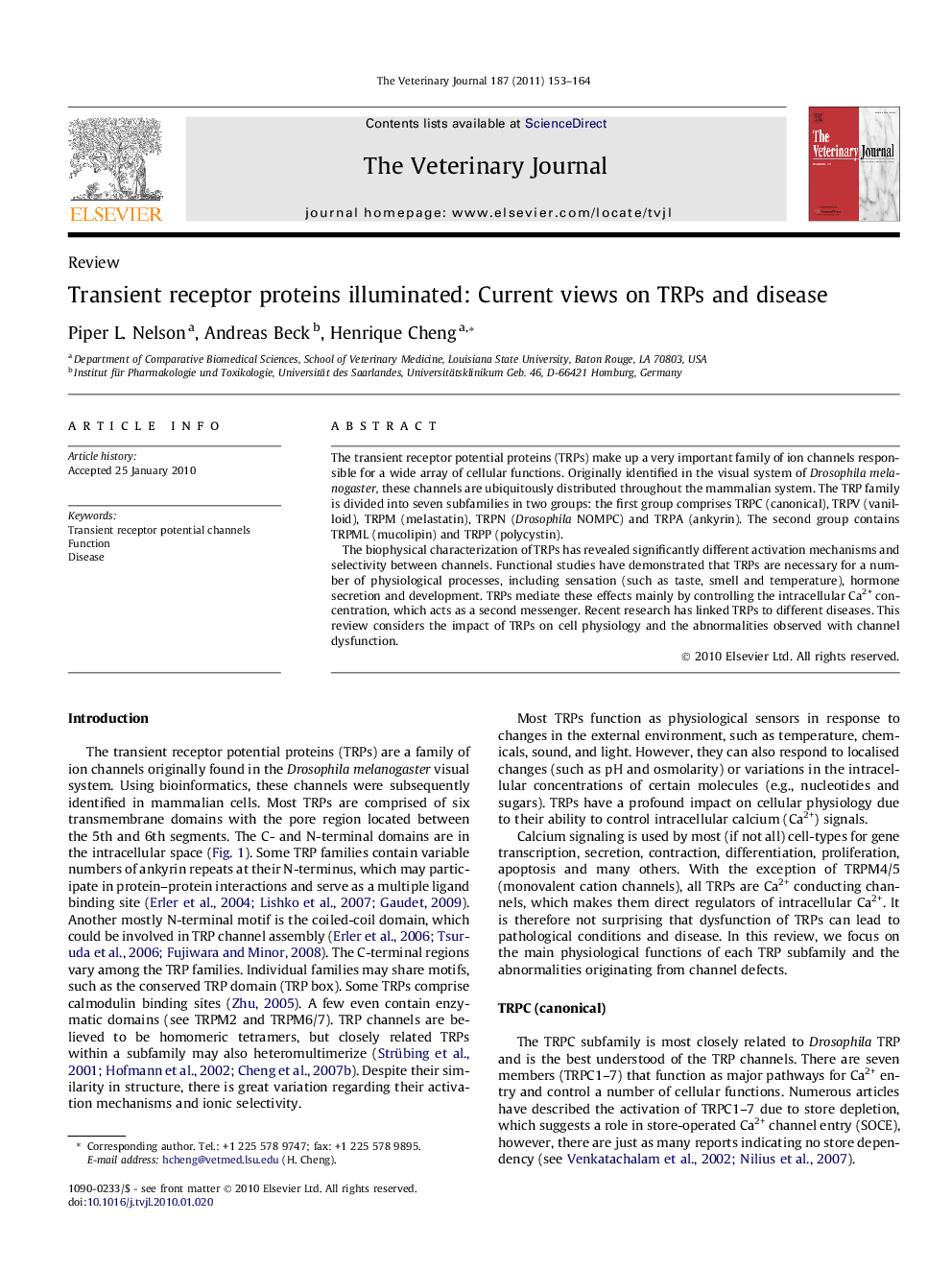| Article ID | Journal | Published Year | Pages | File Type |
|---|---|---|---|---|
| 2464809 | The Veterinary Journal | 2011 | 12 Pages |
The transient receptor potential proteins (TRPs) make up a very important family of ion channels responsible for a wide array of cellular functions. Originally identified in the visual system of Drosophila melanogaster, these channels are ubiquitously distributed throughout the mammalian system. The TRP family is divided into seven subfamilies in two groups: the first group comprises TRPC (canonical), TRPV (vanilloid), TRPM (melastatin), TRPN (Drosophila NOMPC) and TRPA (ankyrin). The second group contains TRPML (mucolipin) and TRPP (polycystin).The biophysical characterization of TRPs has revealed significantly different activation mechanisms and selectivity between channels. Functional studies have demonstrated that TRPs are necessary for a number of physiological processes, including sensation (such as taste, smell and temperature), hormone secretion and development. TRPs mediate these effects mainly by controlling the intracellular Ca2+ concentration, which acts as a second messenger. Recent research has linked TRPs to different diseases. This review considers the impact of TRPs on cell physiology and the abnormalities observed with channel dysfunction.
